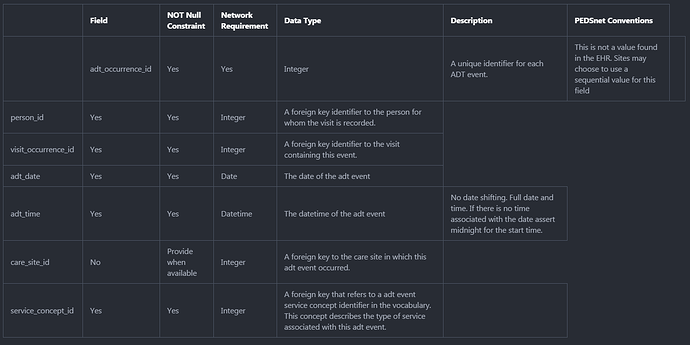Thank you.
We have two levels already defined: visit_concept and place_of_service, like described above. What I think we are talking about is a third level – a way to document the actual “service” provided that is nested within the place_of_service.
I.e. in a outpatient visit_concept, a Emergency room place_of service, an acute care ‘service’ was provided. Or in an inpatient visit_concept_id, an inpatient place of service, an CICU “service” was provided.
Nested within the service – (fourth level) – procedures may be performed (procedure occurrence table), or condition_occurrence, or drug_occurrence, or measurement may happen. Like in the ER above, resuscitation procedure, or CICU there was blood transfusion.
A hiearachial nested convention like this will solve 1000s of analytic use cases. One formalized convention for “service” is documented here
https://www.hcup-us.ahrq.gov/toolssoftware/util_flags/utilflag.jsp
By adopting something like this – we get upto four levels.
Visit_concept * place of service * service type * (procedure, condition, drug, measurement, observation) = pretty granular information

